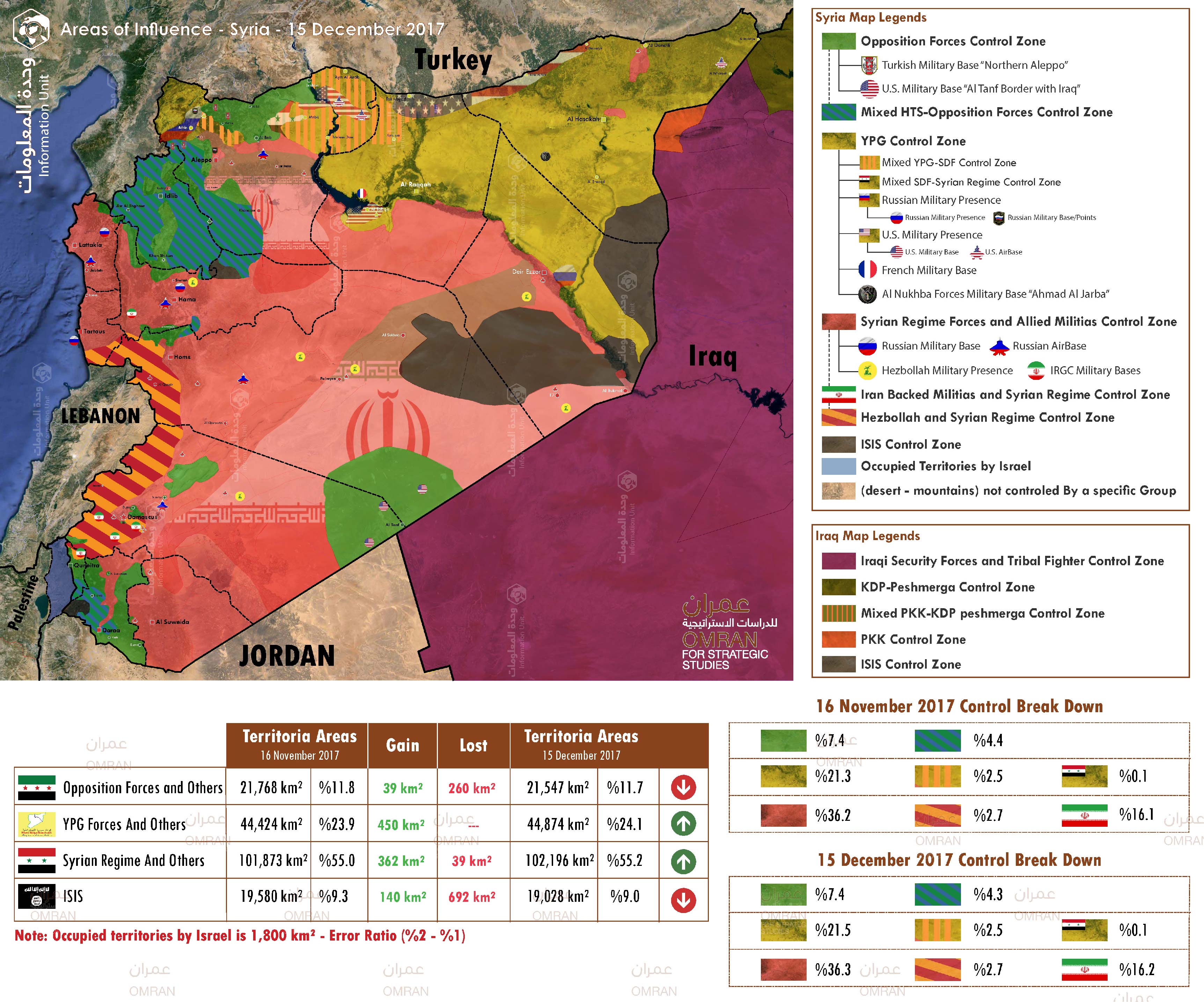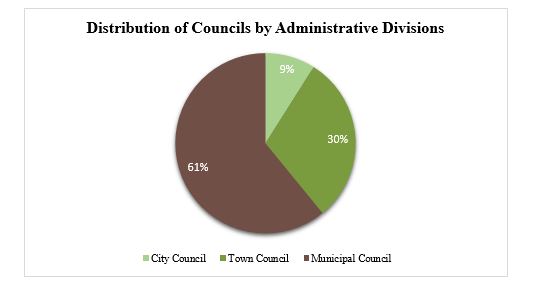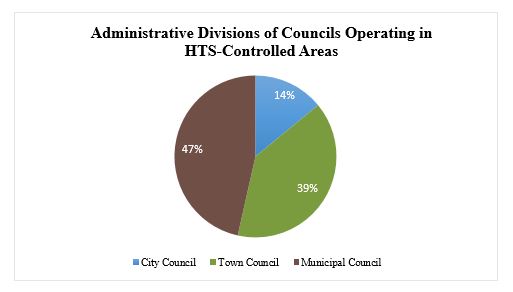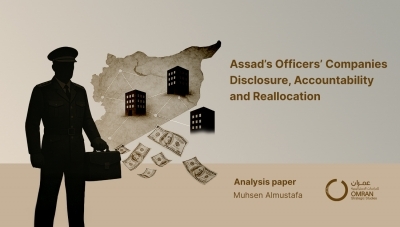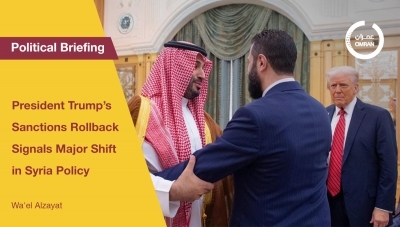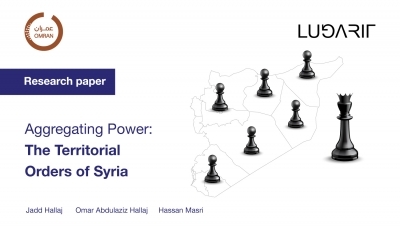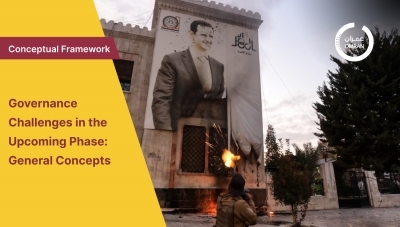Events
Why Reports of ISIS’ Demise Have Been Greatly Exaggerated
During the same week the U.S. and Russia declared victory over ISIS in Syria, the militant group launched a series of surprise attacks around the country. Despite the triumphant claims of world leaders, these offensives suggest such statements are a little premature.
The same day that President Vladimir Putin declared victory over the so-called Islamic State, the militant group launched a surprise offensive against government forces in Deir Ezzor province, killing up to 31 pro-government fighters in the following three days.
“In just over two years, Russia’s armed forces and the Syrian army have defeated the most battle-hardened group of international terrorists,” Putin told Russian forces on Monday during a visit to Russia’s Hmeimim air base in Syria, before ISIS attacked government positions north of the town of Boukamal, a former key stronghold for the militants.
U.S. President Donald Trump made similar victory claims on Tuesday while signing the National Defense Authorization Act into law. The bill, he said, “authorizes funding for our continued campaign to obliterate ISIS. We’ve won in Syria … but they [ISIS] spread to other areas and we’re getting them as fast as they spread.”
The following day, however, ISIS militants engaged in clashes with a Pentagon-backed rebel group near a U.S. base in al-Tanf in southwest Syria. Militants near the Palestinian Yarmouk camp south of Damascus also launched an attack on government positions in the nearby al-Tadamon neighborhood, seizing 12 buildings. The Syrian Observatory for Human Rights described it as the largest offensive south of the capital “in months.”
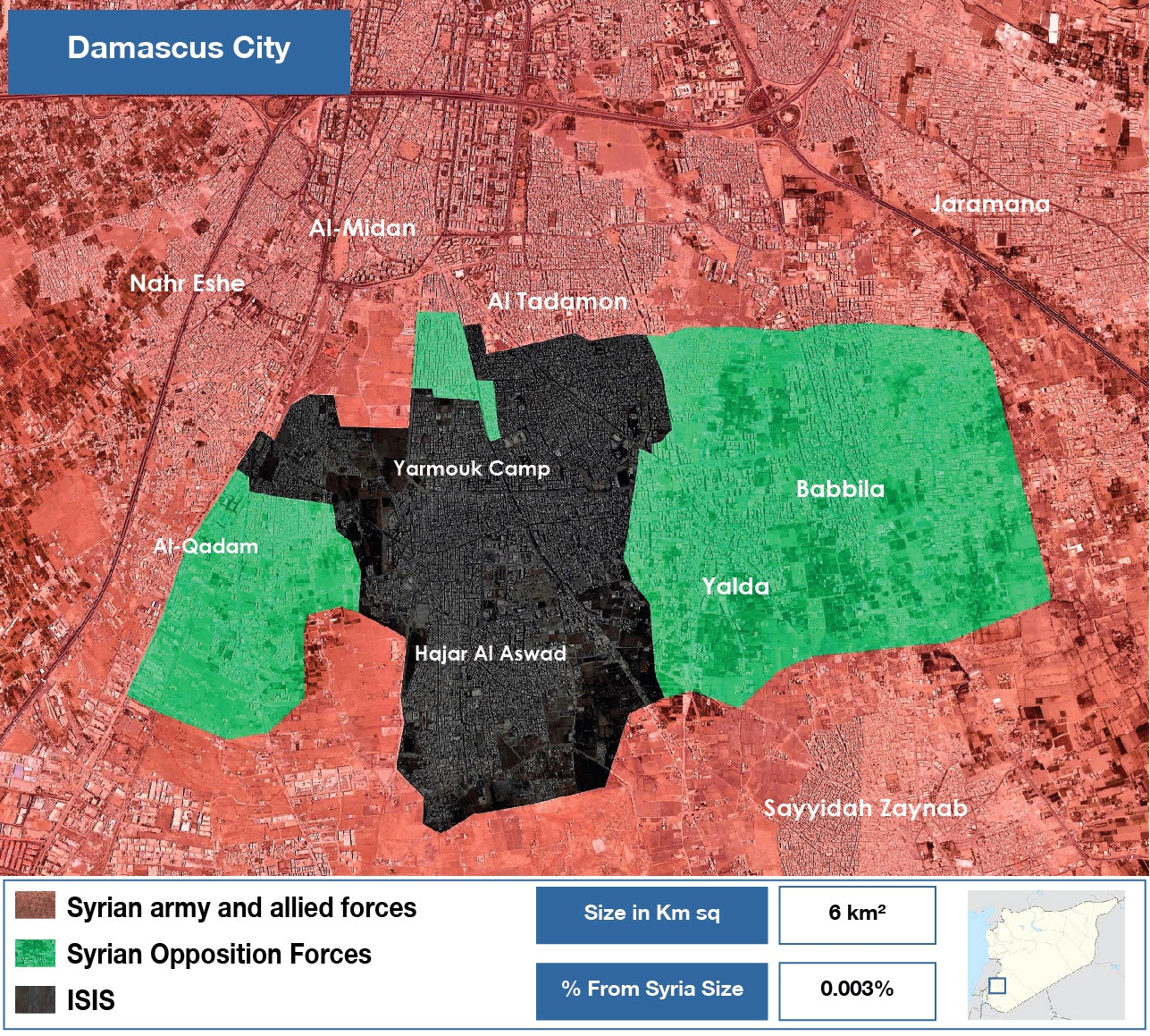 A map of control showing territory held by ISIS south of the Syrian capital, Damascus.
A map of control showing territory held by ISIS south of the Syrian capital, Damascus.
By Omran for strategic studies -Nawar Oliver
While it’s unclear if ISIS timed the attacks as a response to the U.S. and Russian statements, the militant’s new offensives serve as a reminder that it may be too soon to sound the death knell for ISIS in Syria, experts said.
At the height of its power in 2015, ISIS commanded territory in Iraq and Syria larger than the size of Ireland. This year, however, separate Russian and U.S. military campaigns pushed militants out of all their major strongholds across the two countries. While Putin and Trump call this a complete defeat others remain skeptical.
“I think that there’s a bit of ambiguity and confusion with regard to what a defeat might look like,” Simon Mabon, a lecturer in international relations at Lancaster University and co-author of The Origins of ISIS, told Syria Deeply.
“Whilst some will talk of a military defeat and the liberation of Syrian-Iraqi territory, the bigger and arguably much trickier struggle is about defeating the ideology and preventing the group – or a manifestation of it – from re-emerging,” Mabon said.
Earlier this month, Sergei Rudskoi, a senior Russian military officer claimedthat “not a single village or district in Syria under the control of ISIL.”
According to the SOHR, ISIS still controls 3 percent of Syrian territory, or 5,600 square kilometers (2,162 square miles). ISIS is present in southern Damascus, in “large parts” of the Yarmouk camp as well as in parts of the al-Tadamon and al-Hajar al-Aswad neighborhoods, where they are battling government forces.
ISIS is also active in desert regions east of the government-held town of Sukhana in Homs province as well as in a small enclave in northeast Hama, where it is engaged in fighting with the Hay’at Tahrir al-Sham alliance.
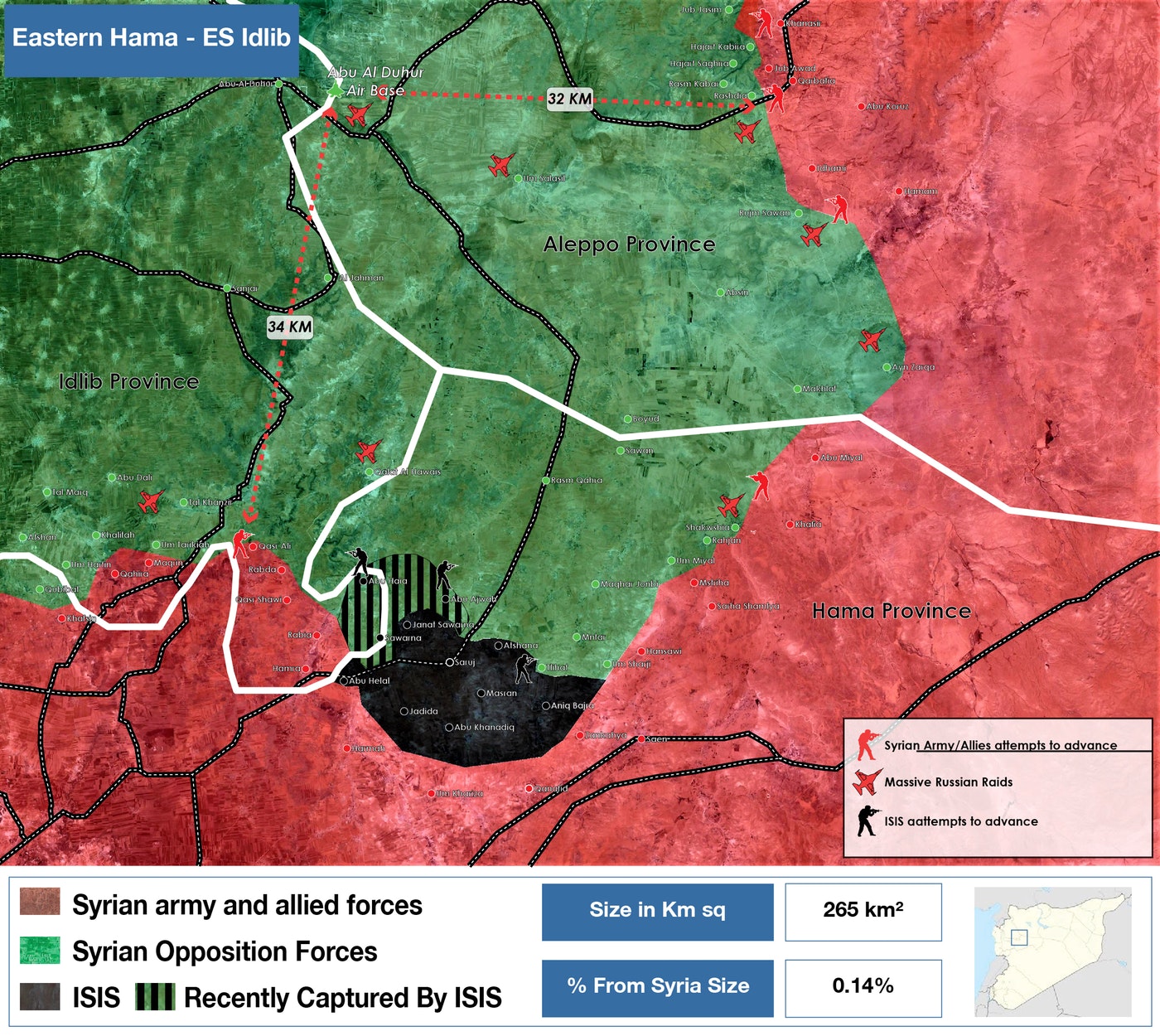
A map of control showing territory held by ISIS in Hama province.
By Omran for strategic studies -Nawar Oliver
Militants also control at least 18 towns and villages in Deir Ezzor province, where it is battling both the Syrian government and the U.S. backed Syrian Democratic Forces. In Syria’s southern province of Daraa, ISIS controls a small enclave close to the Israeli-occupied Golan Heights, where it has previously clashed with rebel forces.
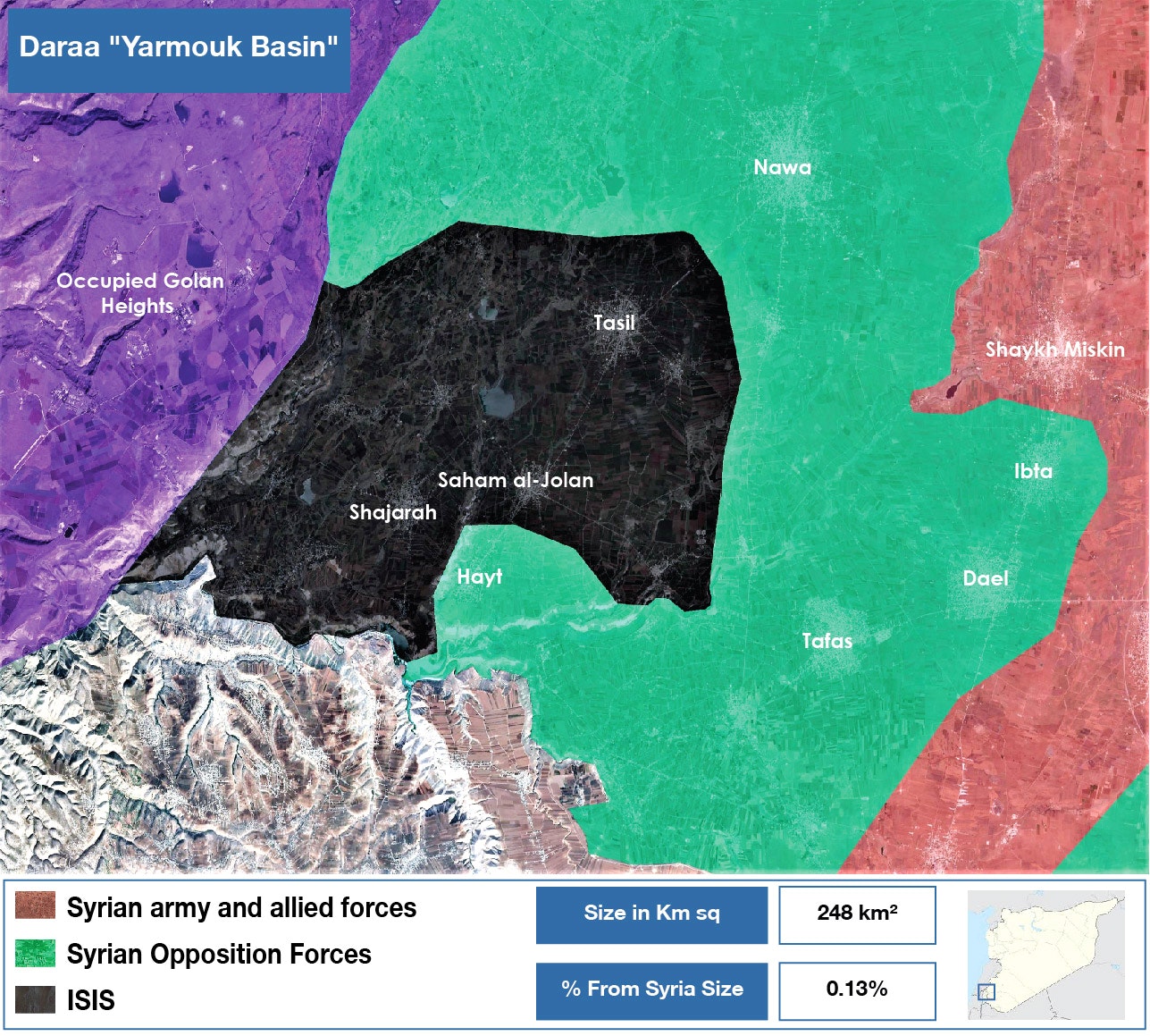
A map of control showing territory held by ISIS in the southern province of Daraa.
By Omran for strategic studies -Nawar Oliver
Some White House staff and French President Emmanuel Macron said they were wary of Russia’s claim of victory on the ground. “We think the Russian declarations of ISIS’ defeat are premature,” an unidentified White House National Security Council spokeswoman told Reutersin a report published Tuesday.
“We have repeatedly seen in recent history that a premature declaration of victory was followed by a failure to consolidate military gains, stabilize the situation, and create the conditions that prevent terrorists from reemerging,” she said.
The militant’s last vestiges of territory are coming under severe strain by a wide array of rivals. It is only a matter of time before militants are driven to rugged hideouts in Homs and in the Euphrates Valley region. But as military battles subside across the country, a slow-grinding and methodical campaign should kick off to prevent an ISIS resurgence.
“To properly talk of a victory over the group, the conditions that gave rise to them must be eradicated. By that, I mean that people must improve their living conditions, be granted better access to political structures and to be able to exert their agency in whatever way they wish,” Mabon said.
“To fully defeat ISIS, such conditions must be addressed, preventing grievances from emerging that force people to turn to groups such as ISIS as a means of survival,” he added.
However, with military operations against militants still underway, there has yet to be any significant attempt to battle the ideological residues of the group or address the grievances that led to its emergence.
In an attempt at countering ISIS’ ideology, activists and Islamic scholars set up the Syrian Counter Extremism Center (SCEC)in the countryside of Aleppo in October. However, the so-called terrorist rehabilitation center has limited funding, giving it little ability to prevent the return of ISIS, especially after hundreds of ISIS-affiliated militants and defectors flocked to opposition-held areas in northern Syria in recent months.
Iraq, whose military also declared victory over ISIS this month after driving militants from their major strongholds, is already confronting a possible return of the extremist organization, in a further indication that claims of victory are premature.
According to the Iraq Oil Report, a new armed group, hoisting a white flag that bears a lion’s head, has recently appeared in disputed territories in northern Iraq. Citing local leaders and Iraqi intelligence, the report claimed that some members of the new group are known to have been members of ISIS. This has given rise to fears that ISIS may be “regrouping and rebranding for guerrilla warfare,” the report said.
A regrouping of ISIS would not come as a surprise, especially since militants can still capitalize on grievances in marginalized Sunni communities across Iraq and Syria.
“Across both states, Sunnis had been persecuted and marginalized, politically and economically, along with the physical threat to their very survival,” Mabon said.
“Whilst many are fearful and angry of ISIS, the deeper issues of marginalization and persecution remain.”
Map of Control and Influence: "Syria 15 December 2017"
Damascus
- December 7, inside sources, reported that Hay’at Tahrir Al-Sham-affiliated combatants who were not pre-war inhabitants of Eastern Ghouta will be evacuated to Idleb governorate in the coming weeks. This development is pursuant to an agreement reached between armed opposition groups in the area and the Government of Russia.
- December 8, media sources indicated that representatives from the Syrian Regime have reached an agreement on the terms of a reconciliation agreement with the Negotiation Committee of Raheiba, in Raheiba subdistrict, in the eastern Qalamoun region of Rural Damascus governorate.
Important Note The most important terms reportedly included: implementation of a ceasefire in exchange for the entry of basic humanitarian aid and water; the establishment of a Syrian Regime local governance structure and the dissolution of all local opposition administrative structures.
- December 10, media sources claimed several ISIS commanders have evacuated Yarmouk camp and Hajar Aswad over the past month. Unconfirmed reports indicate they have relocated to ISIS-affiliated Jaish Khaled Ibn Al-Waleed-controlled areas of southern Syria.
- December 12, Clashes have continued in the vicinity of Bait Jan, in Bait Jan subdistrict in Western Ghouta, between opposition forces and Syrian Regime backed by Pro-Iran Militias. At present, advances by both parties remain tentative.
Important Note The humanitarian situation in Eastern Ghouta continues to deteriorate. Bread pack prices reached 1,900 SP, 1kg of rice is currently at 4,000 SP, and most day-to-day essentials are scarce in public markets.
Southern Front
- December 7, Hezbollah and Pro-Iran militias have reportedly deployed reinforcements to Jidya and Deir Eladas, located west and north of As-Sanamayn in Northern Daraa.
Al Hasakeh
- December 8, media reports claimed the U.S.-led international coalition sent a sizeable weapons shipment to the Syrian Democratic Forces (SDF). This shipment reportedly entered Al-Hasakeh governorate through the Syria—Iraq Fishkabour border crossing.
Important Note Last weapons shipment to enter the area was reportedly delivered on November 23, on November 24, President Trump reportedly informed President Erdogan that the U.S. intended to end its support to the SDF in Syria.
- December 12, humanitarian conditions in Shaddadah camp have continued to deteriorate. Of note, Shadadah camp is located between Al-Hasakeh city and Shadadah town. Reports indicate the total number of IDPs in the camp is now at least 6000 individuals, 90% of which were displaced from Deir Ez-Zor governorate on account of ongoing military operations.
Important Note The camp’s inhabitants reportedly suffer from a lack of basic food items, especially bread, as well as limited WASH and medical support. Unconfirmed reports indicate that around 150-200 people have been evacuated to Damascus each week since the start of December for medical treatment. Generally speaking, IDPs in Al-Hasakeh governorate continue to experience difficult conditions, especially given the limited capacity of existing camps to host all those displaced from Deir Ez-Zor governorate as well as worsening seasonal weather conditions.
Aleppo
- December 6, inside sources, indicated that airstrikes targeted Al-Azzan mountain, located 19 km south of Aleppo in the vicinity of Azzan town, Jebel Saman subdistrict. According to these sources, the attacks were launched by the Government of Israel and targeted an Iranian backed militia (Badr Organization) military base established in 2015.
Important Note December 1 and 4, Israeli airstrikes also targeted Government of Syria-controlled munitions storage facilities located between Kisweh and Sahnaya, south of Damascus city, and in Jamraya, in Qudsiya subdistrict.
- December 9, the Syrian Interim Government issued a statement claiming to have held a meeting with 37 opposition forces representatives in northern rural Aleppo, which concluded with an agreement to establish a ‘National Army’.
Idlib
- December 10, the Salvation Government issued a statement in which it announced the Syrian Interim Government would have 72 hours to evacuate all of its offices in Idlib governorate.
Important Note this comes after a statement on December 9, in which the Syrian Interim Government’s Head of Public Relations was cited as having described the Salvation Government as a terrorist organization.
The Role of Jihadi Movements in Syrian Local Governance
Executive Summary
-
Hay’at Tahrir al-Sham (HTS), exemplifies how international extremist jihadi organizations, such as Al Qaeda, have evolved in Syria. Informed by the experiences of Al Qaeda and other jihadi groups in Iraq, HTS has developed a governance strategy that depends on building support from the local Syrian population.
-
In Idlib province (Syria), a few local administrative bodies that provide critical social services are affiliated with HTS. Others are affiliated with Ahrar al Sham and Jaysh al Fateh. Some, however, are affiliated with opposition Local Councils and civil society organizations.
-
Local Councils are responsible for local administration of services in coordination with the Syrian Interim Government. Currently, there are 156 Local Councils operating in Idlib province with the following administrative divisions: 9% City Councils, 30% Town Councils, and 61% Municipal Councils. Of these Local Councils, 86 operate in HTS-controlled areas—14% City Councils, 39% Town Councils, and 47% Municipal Councils.
-
Equipped with the combined experiences of its affiliated jihadi groups, HTS aims to gradually establish a permanent presence in Syria and create a state under “Islamic law” in one of three forms, an emirate, Islamic state, or caliphate.
-
HTS’ local governance strategy depends on three elements, 1) providing social services, 2) enacting coercive policies of public order, and 3) propagating its religious and political ideology. To support this strategy, HTS operates through four main bureaus, 1) General Administration for Services, 2) Military and security operations wing, 3) Dawah and Guidance Office, and 4) Sharia courts.
-
HTS establishes a relationship with the local population through cooperation (mutual interests), containment and infiltration policies, or exclusionary measures. The type of relationship is determined by HTS’ strength and control in a respective community, available resources, local support network, the strength of Local Councils, and the presence of other armed groups that support and protect Local Councils.
Introduction
Extremist Jihadi movements aim to seize territory in order to govern it; however, each movement has a different perspective on the type of governance, level of institutionalization, and mechanisms necessary to fulfill its vision for governing the territory. Some jihadi movements, such as the Islamic State, are aggressive and force a specific ideology on local communities. They spend less time providing basic goods and services, attending to the needs of the community, or managing their views on life or Islam. Other groups, such as Hay’at Tahrir al-Sham (HTS)([1]), pursue a relationship with the local communities based on mutual interests, managed by a combination of positive and negative incentives.
HTS, which formed from multiple jihadi groups including Al Qaeda, developed with essential insight and experience from various fronts of the “Global Jihad.” HTS used a combination of the following strategies to establish an effective local governance structure: providing social services, executing policies of coercion, and spreading its ideology—all through a specifically crafted structure cementing its presence in Syrian society for the long term.
No group understands the dangers of HTS efforts to establish local governance better than the Local Councils([2]), which in this case are faced with an extraordinary challenge. This study analyzes the possible impact of the HTS’s local governance on the Local Councils in Idlib province. This province was chosen for the case study for the following reasons: 1) it is the only province that is nearly completely outside of the control of Assad central state; 2) its geographic location, connecting coastal Syria with central and northern regions and Turkish border, is significant; 3) it has the most Local Councils of any other province controlled by opposition forces; and 4) it is the main stronghold for the HTS.
First, this study compares the governance methods of the HTS and Local Councils in the areas under HTS control. Second, this study explains how the HTS became involved in local governance and how it interacts with the Local Councils.
This study is part of a larger effort to understand the state of governance in all Syrian territories in order to reach a consensus on how to deal with these new circumstances during and after the political transition. This study compares local governance policies of HTS and the opposition Local Councils beginning with a description of how the HTS was formed and its involvement in local governance bodies. Next, this study offers a description of Local Councils that operate in HTS-controlled territories and examines the relationships between the Local Councils and the HTS. This study concludes with a number of recommendations on how to empower Local Councils in areas under HTS control to avoid their cooptation. This study was conducted based on interviews with Local Council members and analysis of open source information such as news articles, reports, and social media postings.
Formation of HTS: Specifically Crafted Structure
Some argue that HTS is merely a façade for Jabhat al Nusra (see section one below on the formation of Jabhat al Nusra), which attempts to curtail local and international pressure after the fall of Aleppo and the start of the Astana talks. Others claim that HTS is loyal to its core Al Qaeda leadership, and the reason for adopting the name HTS reflects recommendations from its central leadership to integrate into the local communities. Finally, some attribute the formation of HTS to a culmination of various groups competing to represent the “Syrian Jihad.” Because these perspectives offer only a partial understanding, our study provides a comprehensive analysis of HTS structure and governance as a major byproduct of Al Qaeda, a constantly changing cross-border Salafi Jihadi movement.
HTS has focused on the following major themes in order to establish itself in local communities: its relationship with the international community, jihadi experiences in Iraq, its relationship with Al Qaeda, competition with other rebel groups, and local support.
HTS developed its current structure as a result of three phases:
1.Jabhat Al Nusra – January 2012-July 2016
Jabhat al Nusra was formed in January 2012 with help by Al Qaeda’s branch in Iraq. The group adopted a patchwork of religious ideologies reviewed by Al Qaeda’s central branch. The leader of Jabhat al Nusra, Abu Muhammad Al Jolani, made it clear that he wanted to avoid mistakes made during the Iraqi Jihad, and declared his commitment to Al Qaeda’s newfound ideology. In the beginning, Jabhat al Nusra refrained from publicly affiliating itself with Al Qaeda despite its public praise for the group. It also avoided international attention by presenting itself as a native Syrian organization. Jabhat al Nusra immersed itself in the local communities and concerned itself with society’s general demands, such as standing up to the Assad regime. The group also took advantage of the revolution to expand its presence in Syria, exercise its military strength, and create mutual alliances with the locals. The group also benefited from a significant boost in membership after the Assad regime released prisoners affiliated with jihadi movements.([3])
However, Jabhat al Nusra also has faced a number of challenges:
- Jabhat al Nusra’s designation as a terror group by the United States in January 2012 and by the United Nations in 2013
- Conflict with Al Qaeda in Iraq in April 2013 following the establishment of the Islamic State in Iraq and the Levent (ISIL) and its subsequent caliphate in March 2014
- Jabhat al Nusra’s public acknowledgement of its loyalty to Al Qaeda, and the negative reaction from Syrian revolutionaries as a result
- Russian intervention in Syria in September 2015
Jabhat al Nusra dealt with all of these challenges and eventually adapted into a new organization in July 2016 under the name Jabhat Fateh al Sham (JFS)([4]).
2.Jabhat Fateh al Sham (JFS) – July 2016-January 2017
Al Jolani personally announced the termination of Jabhat al Nusra and the formation of Jabhat Fateh al Sham (JFS), emphasizing that the new entity would have no ties to Al Qaeda. He explained that the organization made this decision to meet the demands of the Syrian people, who wanted to protect and strengthen the “Syrian jihad” and avoid claims from the international community that Al Qaeda elements exist in the Syrian opposition([5]) . It seems Al Jolani intended to improve the group’s relationship with the international community by announcing its independence from Al Qaeda and insisting upon its closeness to local communities. This new group presented an opportunity to regain local support for the jihadi project, for which support had dwindled following a series of Russian, regime and US led international coalition military strikes on opposition-controlled areas under the pretense that Al Qaeda-linked Jabhat al Nusra forces were present in the area. This new group also sought to appease some locals who were displeased with Jabhat al Nusra’s interference in local affairs, which had created popular unrest.
JFS also emerged as a result of competition between Jabhat al Nusra and Ahrar al Sham ([6]), to dominate the “Syrian jihad.” Al Jolani wanted to put pressure on Ahrar al Sham by draining its resources through a new jihadi coalition and bringing into question its jihadi qualifications.
But the presence of Abu Abdullah al Shami and Abu al Faraj al Masri, who are Al Qaeda linked Jihadi leaders inside Syria that were also affiliated with Jabhat Al Nusra, during Al Jolani’s announcement confirmed Al Qaeda’s implicit influence on JFS and provided the new group with credibility among jihadist organizations.
JFS endured repeated attempts to isolate and eliminate the group, especially following the eastern Aleppo deal (12/13/2016), Ankara’s cease fire deal (12/30/2016) and the Astana meetings (01/23/2017). The international community ultimately designated JFS as a terror group, even though it included non-terrorist factions close to the West, such as Nur al Din al Zinki. To prevent being targeted by the international community, JFS had no choice but to announce the formation of HTS at the start of 2017.
3.HTS – January 2017
HTS formed from a combination of opposition groups in northern Syria at the end of January 2017. These groups included JFS, Nur al Din al Zinki, Jabhat Ansar al Din, Jaysh al Muhajireen wal Ansar, and Liwa al Haq. A number of jihadi and Salafi leaders joined HTS, as well, including Abdul Razaq al Mahdi, Abu al Harith al Masri, Abu Yusuf al Hamwi, Abdullah al Muhaisni, Abu al Tahir al Hamwi, and Musleh al Iyani.
Furthermore, HTS emerged due to the continued competition between Jabhat al Nusra and Ahrar al Sham. HTS attracted more than 25 opposition fighting groups from its competitors, 16 of which came from Ahrar al Sham([7]). Ahrar also lost a number of its prominent leaders to HTS including Abu Saleh Al Taha and Abu Yusuf al Muhajir.
The new group confirmed Al Jolani’s intentions to firmly establish the jihadi project in Syria and salvage its legitimacy. HTS adopted many of the revolutionary slogans used in local revolutionary circles([8]). Through its media campaign, HTS expressed approval for a conditional political negotiation and demonstrated a willingness to fight the “Khawarij,” who are a historically marginal yet significant group of Muslims that are considered more extreme and radical.
HTS comprises approximately 19,000 to 20,000 members, including administrators, fighters, and religious figures. HTS has a significant presence in some Syrian territories with well-known bases and checkpoints. In other areas, HTS has a limited presence where it merely patrols the area. HTS forces operate in Idlib province, southern and western Aleppo, Jarood al Qalamoon, eastern Ghouta, and Daraa province, minimally. (See map below for reference.)
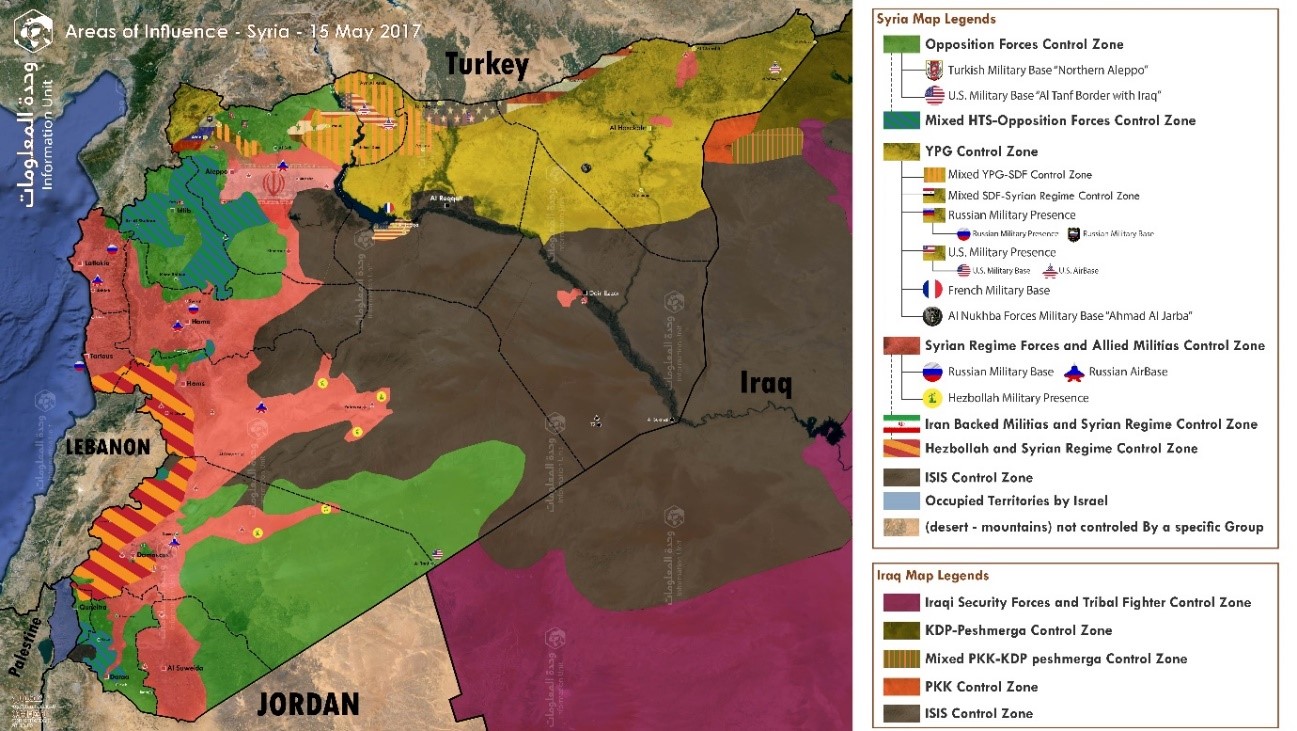
Figure 1: Map of Territories in Syria as of May 15, 2017
Based on information surveyed and interviews, HTS operates through eight divisions, namely military, security, services, religious law, courts, media, finances, and politics. For each of these divisions, there is an office organized under the leadership of the “Shura Council.”
General Commander of HTS
Figure 2: HTS Command Structure
The HTS administrative structure suggests that the group is organized and tied directly to a central leadership body, which implies that HTS aims to establish a permanent Islamic governing structure. This structure is a direct threat to the Local Councils, the primary entities leading efforts to rebuild the nation.
HTS Management of Territory and its Relationship with the Local Councils: Road to Permanence
Jihadi movements with military wings seek to administer the territories they control in order to achieve their goals, but each movement differs in its approach to governance. In an attempt to avoid conflict, some jihadi movements focus on providing social services rather than forcing a particular ideology on local communities. Other groups take the opposite approach, regularly forcing locals to accept a specific ideology in order to secure a permanent presence. Here, it is important to shed some light on HTS’s experience with local governance, the methods and resources it requires to effectively govern, and its relationship with Local Councils in HTS-controlled territories.
HTS Perspective on Local Governance: Picking from the Most Successful Jihadi Practices and a Pragmatic Approach
HTS aims to establish a permanent presence gradually and to create an Islamic governing structure, such as an emirate, an Islamic State, or a caliphate. HTS’s governing structure is a collection of best practices gathered from its affiliate groups and other jihadi groups around the world ([9]).
In its attempts to establish a permanent presence through an Islamic governance structure, HTS affords the local community a status of great importance. HTS considers the local community a key actor, which has the capacity to carry forward the HTS project or bring it to an end. For this reason, HTS employs a number of strategies to gain support from the local community, such as 1) providing social services, 2) enacting policies of coercion, and 3) spreading a radical s ideology. Several factors that distinguish HTS from other groups include its level of presence and control in the areas it governs, the amount of resources invested in its governing structure, the results achieved, and the people responsible for making decisions and carrying out the project.
1.Providing social services: General Administration for Services
The General Administration for Services is responsible for providing social services in HTS territories. The administration was formed under Jabhat al Nusra in 2013, when the organization decided to separate from the Islamic Administration for Services ([10]). The General Administration for Services is made up of several divisions established based on general geographical distribution (Idlib, Aleppo, Hama, etc). These divisions, similar to ministries, are connected to specific service offices, such as the Border Services Office, Desert Services Office, and Aleppo City Services Office. All of the offices are managed by a municipal administration, under the authority of the General Administration for Services. These local offices carry out the policies of the General Administration for Services ([11]). Through these offices, HTS interacts with the local community by providing important services. Some of these communities include Harem, Salqeen, Darkoush, and Talmins. In areas where HTS does not control the municipal offices, the General Administration for Services either directly coordinates with established service structures (via Local Councils) or independently provides the necessary services)[12]). If HTS is unable to provide services then Local Councils provide them, but HTS still maintains a significant influence over them ([13]).
Figure 3: Structure of the General Administration for Services ([14])
HTS knows well the importance of providing services to the local community in order to garner support and recruit new volunteers. HTS also knows that if it can provide basic services, it may weaken its competitors. Furthermore, if community members receive services from HTS, they may be more willing to accept the organization’s coercive methods of spreading its ideology. HTS cannot afford the high costs of providing all necessary services, so the group focuses on providing only the most important ones, such as electricity and water, through which it can significantly influence the Local Councils ([15]). In the meantime, HTS can diversify the kinds of services it offers as more resources become available, if such provisions will help the organization establish a permanent presence in the territories it controls.
HTS employs local civilians in social services jobs in order to maintain positive relations with the community ([16]). As for funding the services, HTS depends on its external support networks, both from the central leadership and from its supporters. HTS also levies taxes on the local community. Additionally, people passing through HTS-controlled territories must pay a road tax, which is especially lucrative in the crowded areas of northern Syria and along important supply lines( [17]) . Furthermore, organizations that want to operate in HTS territories must also pay for protection and permission to operate there ([18]). HTS also collects fines from those who violate its rules. In addition, HTS also buys and sells properties.
2.Policies of coercion: Violent and non-violent tactics
HTS also resorts to coercive measures against its adversaries. The organization justifies its coercive policies against those engaged in immoral acts, cooperating with the West or the Assad regime, and when applying Sharia law. HTS uses military force to execute its coercive policies, evidenced by its operations against opposition groups in northern Syria, including the Jabha Shamiya, Fastaqim, Suqoor al Sham, Jaish al Islam, and Jaish al Mujahideen ([19]). HTS security branches ([20]) also force locals to adopt the group’s worldview, and they punish those who do not comply.
HTS uses indirect coercion and non-violent means to force its worldview on the locals and create a shared ideology. This strategy is managed by HTS’s Dawah and Guidance Office, which is responsible for spreading the group’s ideology, and the media office, which is responsible for generating propaganda. The two offices organize and offer religious courses and programs in mosques and public places, where they can spread HTS ideology and organize protests against their competitors ([21]).
3.Ideology: The duality of courts and advocacy
Informed by the experiences of Al Qaeda, HTS gradually implements Islamic law, or Sharia, to avoid clashing with local populations ([22]). HTS depends on a two-pronged approach, comprising the courts and Dawah, to gain support from the locals. On one hand, HTS has inherited a court system established by Jabhat al Nusra in Salqeen, Sarmada, and Darkoush. By controlling the courts, HTS gains the locals’ trust by implementing policies according to its interpretation of Islamic law ([23]). This position of power also allows the group to act with impunity by exploiting religious ideology to justify unpopular actions, such as commandeering public goods or property, or those of its competitors ([24]). On the other hand, HTS depends on its Dawah and Guidance Office ([25]) to conduct ideological campaigns to convince local communities to support its project and adopt its vision. HTS has demonstrated greater success in spreading its ideology in rural areas compared to more populated areas in Idleb province, such as Muarat al Noman, Saraqeb, and Kafranbal. These areas have well-developed civil societies making it much more difficult for HTS to infiltrate them.
HTS’s Relationship with Local Councils: An Approach Based on Mutual Interest
Amid the ongoing conflict in Syria, Idlib province is significant for several reasons. First, it is the only province that is nearly completely liberated. Second, it is positioned in a strategic geographic location, connecting coastal Syria with central and northern regions. Third, it has the most Local Councils of any other opposition-controlled area. Fourth, and finally, it is the main stronghold of the HTS. Our description of the services provided in Idlib province includes the Civilian Services Administration of Jaysh al Fateh, the Committee for Services Management of Ahrar al Sham, the General Administration for Services of HTS, the Interim Government’s service offices, and the Local Councils, as well as other civil society organizations. There are currently 156 local sub-councils operating in Idlib province ([26]).
Figure 4: Distribution of councils by administrative divisions
There are also a number of councils in the villages and rural areas of Idlib province that are not recognized as full-fledged councils by the Interim Government’s Ministry of Local Administration or the Idlib Provincial Council. These councils were formed by either the leaders of these localities seeking support from aid organizations or military groups attempting to increase their legitimacy among the locals ([27]).
There are 81 Local Councils operating in territories heavily controlled by HTS in Idlib province. They are categorized by following administrative divisions. (Please see the figure below.)
Figure 5: Administrative Divisions of Councils Operating in HTS Controlled Areas
A large number of these councils are affiliated with the Provincial Council of Free Idleb, which is a part of the Syrian Interim Government ([28]). Some of these councils have no affiliation with the Interim Government. The remaining 450 the councils, including those in Harem and Salqeen, are affiliated with the HTS-controlled General Administration for Services.
All of the councils differ in their effectiveness and their roles within the community according to the following factors: capacity, legitimacy, size of the administrative unit, military operations, and its relationship with HTS. Each council aims to provide basic services to its communities including humanitarian aid, infrastructure renovation, health care, sanitation, education, civil defense, local security, and civil society organizations.
The local councils finance their endeavors through a number of sources, the most important of which are cash donations, work project grants, or in-kind donations. The support they receive from the Provincial Council—and the Interim Government overall—is limited and inconsistent. Therefore, Local Councils must generate funds through local taxes, investments in public property, and income from development projects. In addition, the Local Councils, especially those directly affiliated with HTS, receive both financial and logistical support from the HTS General Administration for Services ([29]) .
It seems that HTS acknowledges the significance of the Local Councils, and for this reason, it provides services and develops close relationships with the local community, international community, and parties providing financial support to humanitarian aid and development projects in Syria. Each of these entities are essential players in implementing a future political solution.
HTS’s goal to establish a state under Islamic law conflicts with the political goals of the Local Councils, which form the essential basis for a state. For this reason, HTS pursues a relationship of mutual interest with the Local Councils governed by the following principles: 1) the level of permanence and dispersion, 2) availability of resources, 3) amount of local support, 4) central role of Local Councils and their legitimacy, and 5) Local Council partners.
Based on these principles, the HTS adopted the following approach:
- Cooperation “mutual interests”: HTS develops relationships with the Local Councils based on areas of mutual interest, such as electricity and water—both of which the General Administration for Services controls ([30]). HTS and the Local Councils negotiate the terms of their agreements ([31]), and in some cases HTS may request money, services or logistical services from the Local Councils in exchange for electricity or water ([32]). In other cases, the General Administration for Services may provide Local Councils with logistical or financial support for certain projects ([33]). In territories where HTS does not exercise full control, such as Saraqeb, the organization must build a relationship with the Local Council in order to become a part of the armed coalition responsible for controlling the territory ([34]). HTS also prefers cooperative mutual interest-based measures in places such as Muarat Al Noman, where it does not have a majority of the local support ([35]). Because Local Councils are able to choose whether to align with HTS or its competitors in providing services to the community ([36]), HTS must cooperate with the Local Councils and avoid unwanted interference in local affairs ([37]).
- Containment and infiltration: HTS aims to contain and infiltrate Local Councils to use as a tool[38] in its efforts to forge a permanent presence in the region. HTS uses this strategy in territories where it exercises full control and has a military advantage. HTS also employs this tactic in regions where it does not have the resources to control administrative bodies that provide local services. In areas where HTS has strong local support, such as the rural areas of Idlib, the organization increases pressure on the Local Councils, especially when the councils are ineffective. HTS contains and infiltrates Local Councils by planting HTS-affiliated individuals on the council ([39]) or demanding that an HTS-appointed representative attain a seat on the council ([40]). HTS also employs subtler tactics by influencing the process ([41]) of making a decision within any given council or carrying it out ([42]). (Refer to endnotes for elaboration from Local Council members).
- Exclusion: In places where there is no resistance, where HTS exercises complete control of a territory, the organization terminates all Local Council operations and replaces them with its own structures ([43]). This strategy is especially true in high-value territory, near main supply lines and areas near the border, such as Harem and Darkoush. HTS also adopts this strategy in 1) areas where local support is contested, 2) areas with poor local services, and 3) areas in which Local Councils refuse to allow HTS to play any role, such as in Sanjar ([44]) and Salqeen([45]).
Strengthening the Local Council System: Civil Society, Effective Management, and Resources
Idlib is critical as a case study to measure the performance of Local Councils and the potential for development in the future. In general, Local Councils in Idlib face a number of challenges due to a lack of resources, fierce local competition, and conflicting policies of various parties involved in the Syrian conflict. Local Councils operating in areas under HTS control face the possibility of termination due to HTS’s policies of coercion and infiltration.
The following are general recommendations on how to strengthen Local Councils, especially those operating in areas dominated by HTS and those that are losing credibility among the local population. In order to prevent the Local Councils from falling prey to HTS’s strategy (mutual interest-based cooperation, containment and infiltration, and exclusion), Omran for Strategic Studies offers these recommendations:
- Productive Civil Society: Establish a strong civil society to support and collaborate with the council to prevent HTS from taking control of local administrative bodies. To build a productive civil society in Syrian communities, consider the following steps:
- Teach the local population civil society empowerment skills through trainings and workshops on civil society activism and work.
- Create opportunities for open dialogue, such as town hall meetings, in order to increase communication between civil society organizations and the Local Councils operating in areas controlled by HTS militarily.
- Build public interest on issues of mutual concern, such as resisting efforts by armed groups, including HTS, to get involved in civil society activities. Local radio shows or newspapers can help achieve this step.
2.Effective Local Administration: Councils should have a clear structure and effective governance system that is protected from infiltration and capable of maintaining its operations in HTS-controlled areas. Consider the following steps:
- Assist the Provincial Council of Idlib in streamlining all of its projects, solely through the offices of the Interim Government.
- Provide training and financial/logistical support to the councils operating in HTS-controlled areas.
- Protect areas that the Assad regime, its allied militias, and Russian forces attack—which they justify by claiming that the areas are under HTS control.
3.Improved Local Resources: It is important to develop the financial and human resources available to Local Councils to prevent them from having to negotiate with HTS for shared control. In order to improve and increase the councils’ available resources, consider the following steps:
- Offer technical and theoretical training to qualified candidates to provide the council with necessary expertise. This includes for example trainings on good governance and public sector management.
- Provide council members with consistent salaries.
- Create new markets by developing alternative sources of electricity outside of HTS control.
- Create a fund to invest in for-profit endeavors that would help generate funds for the council.
- Train council members on how to manage public property and property taxes.
Conclusion
HTS is taking advantage of local administration to garner public support in an attempt to establish a state of its own under their version of “Islamic law”. Informed by the experiences of other jihadi groups and recommendations from Al Qaeda, HTS has formulated its own strategy for local governance. The approach combines positive and negative reinforcement measures, in order to secure support from the local community, through a perceived flexible administrative structure that can adapt as the situation in Syria changes. HTS poses a great danger for the stability of future Syria and the region because it seeks to establish a permanent grassroots presence through its local governance strategies—the foundation upon which to form a state—but the organization faces a number of challenges. To HTS, Local Councils are a significant asset because of the critical services they provide, even though the interests of HTS and Local Councils are often in competition. HTS also recognize that Local Councils are the official channels through which funds for aid and development will flow, both now and in the future. For these reasons, HTS pursues a relationship of mutual interest with the Local Councils. At times, HTS adopts a policy of cooperation when they are unable to take over full control; otherwise, HTS contains and infiltrates or excludes Local Councils altogether. HTS’ strategy threatens the existence of Local Councils and demands a serious effort to support these councils.
In order to maintain influence, Local Councils must effectively provide public services, gain support and legitimacy from the local communities, and institutionalize their cooperation with local forces pursuing a free and modern nation state. Furthermore, Local Councils must establish a clear and direct relationship with the Provincial Councils and the Interim Government. And, finally, Councils should attain adequate financial resources and depend less on donors. Only then will Local Councils be capable of overpowering HTS and supporting the creation of a free and modern nation state.
([1]) Hay'at Tahrir al-Sham, commonly referred to as Tahrir al-Sham and abbreviated HTS.
([2]) Local Councils refers to the councils that are part of the Ministry of Local Administration under the Syrian Interim Government.
([3]) Charles Lister, Profiling Jabhat al-Nusra, Brookings, Date: July 27, 2016. Link https://goo.gl/otk0JT
([4]) JFS refers to Jabhat Fateh al Sham formed in January 2017
([5])Al Jolani outline four main goals of JFS, 1) ruling with God’s religion and establishing justice among the people, 2) uniting the forces of the mujahedeen and liberating the Levant from the regime and its allies, 3) protecting the Syrian jihad and continuing it in all legitimate ways, 4) relieving the suffering of Muslims and addressing their concerns at all costs, and 5) providing a peaceful and respectable life for people in the Islamic state. See the Announcement of JFS by Abu Muhammad Al Jolani, You Tube 07/28/2016 https://goo.gl/wDz7Os
([6]) Harakat Ahrar al Sham al Islammiya, commonly referred to as Ahrar al Sham, is a coalition of multiple Islamist and Salafist groups that joined to form a single group in 2011.
([7])Aaron Lund, The Jihadi Spiral, Carnegie Center, 02/28/2017 https://goo.gl/8ShXrp
([8])Ahmad Abazaid, The Great Competition: Ahrar Al Sham vs HTS https://goo.gl/Efr7qu
([9]) Daniel Green , Al Qaeda’s Soft Power Strategy in Yemen, The Washington Institute 01/23/2013 https://goo.gl/L8SGqq
([10])Challenges facing the local administration in Aleppo, Aljazeera, 3/31/2014, https://goo.gl/GmzdYc
([11])Announcement by the General Administration for Services/Office of the Technical Services on the Border in the Town of Harem, Official page of the Town of Harem, 04/20/2017, https://goo.gl/o8Yz6O
([12])Cooperation between the local council in Kafar Daryan with the General Administration for Services to connect an electricity line, Official page of the local council in Kafar Daryan, 10/19/2016 https://goo.gl/iOXzgP، and an electricity station in Saraqib, Radio al Kul, 2017/30/03 https://goo.gl/uO5bvg
([13])A member of the local council of the town of Sinjar mentioned that the council was structurally affiliated with the HTS controlled General Administration for Services on 05/17/2017.
([14])Structure of the Harem Town Council affiliated with the General Administration for Services, Official page of the Harem Town Council, 05/21/2016https://goo.gl/NfRXBG
([15])Maintenance work on the electricity stations in Al Zarba, Official page of the General Administration for Services. 05/01/2017 https://goo.gl/lpDP2K
([16])The Talmans Local Council President Fadel Burhan Omar said that there was a difference in the way HTS dealt with the Local Councils compared with Jabhat Al Nusra. Previously, the organization operated using military figures, but now it uses civilians. This information was gathered during an interview conducted over social media on 04/27/2017.
([17])Charles Lister, Profiling Jabhat al-Nusra, Brookings, July 27, 2016. https://goo.gl/otk0JT
([18])Information gathered through an interview conducted over social media with an individual working with civil society organizations in Idleb province on 05/22/2017.
([19]) Al Jolani’s Latest Plan: Fighting in Search of a Policy, Ahmad Abazaid, Idrak, 02/09/2017, https://goo.gl/4sTImj
([20]) HTS: Similar to Regime Prisons with Ideological Torture, Sultan Jalabi, Al Hayat, 05/13/2017, https://goo.gl/RWHsLq
([21]) Protests in Idleb in support of HTS and rejecting Astana 4, Micro Syria, 05/12/2017,https://goo.gl/cOJ6z7
([22]) Al Qaeda’s Shadow Government in Yemen, Daniel Green, Washington Institute, 12/12/2013https://goo.gl/qYjOeG
([23]) The Courts Ban the Sale of Any Real Estate Belonging to Muslims, Zaytouna Newspaper, 01/04/2017https://goo.gl/ANWN6c
([24])Yasir Abbasmay, How Al Qaeda Is Winning In Syria. War on the Rocks. 10/05/2016. https://goo.gl/kUSDvF
([25]) The Official Page of the Dawah and Guidance Office of Jabhat al 08/04/2016, https://goo.gl/JeMqU8
([26])An interview conducted via social media with Muhammad Khattab, Head of the Local Councils Administration in the Provincial Council of Idleb on 05/19/2017
([27]) Interview conducted via social media with Muhammad Salim Khudr, Local Council Member and PR Officer, 05/19/2017
([28])Naser Hazbar, former president of the Local Council in Muarat Al Noman, indicated that the council is structurally affiliated with the Interim Government and the Provincial Council in an interview via social media on 05/22/2017.
([29])The General Administration for Services is thanked for offering its support to make the water supply network operational again, Official page of the town of Kulli on Facebook, 02/21/2017 https://goo.gl/Zlaejz
([30])Said Gazoul, Sarmada Council in Idleb Pumps Water Again After Electricity Returns, SMART News, 07/21/2016, https://goo.gl/Udyai6
([31])Interview conducted via social media with Usama Hussein, former president of the local council in Saraqeb 05/21/2017
([32])Interview conducted via social media with Naser Hazbar, former president of the local council in Muarat Al Noman, 05/22/2017
([33])General Administration for Services helps the local council in Abu Thuhoor to create a garbage dump, 04/11/2017 https://goo.gl/xtIATZ
([34])In an interview conducted via social media with the former president of the local council in Saraqeb, Usama Hussein, he confirmed that a number of armed groups operated in the area, including Liwa Jabhat Thuwar Saraqeb, Ahrar al Sham, and HTS. Liwaa Jabhat Thuwar Saraqeb has been the main force since it is considered local, 05/21/2017.
([35])Naser Hazbar, former president of the local council in Muarat Al Noman, described previous Al Nusra and HTS efforts to force the locals to accept it as the main provider of services instead of the Local Council; however, the legitimacy that the council enjoyed and the support of the local civil society prevented the success of those attempts, 05/22/2017
([36])Yasir Abbasmay, How Al Qaeda Is Winning In Syria. War on the Rocks. 10/05/2016. https://goo.gl/kUSDvF
([37])Usama Hussein, former president of the local council in Saraqeb, confirmed that the Local Councils gained legitimacy by providing services, supporting civil society, and benefiting from a strong civil society movement in Saraqeb. The presence of political parties in Saraqeb also contributed to the Local Councils’ legitimacy. These were key factors in preventing HTS and other groups from interfering in council affairs, 05/21/2015
([38])Aymenn Jawad Al-Tamimi. Hay’at Tahrir al-Sham and Civil Society in Jabal al-Summaq. Syria Comment. Date 04/04/2017. https://goo.gl/ackML9
([39])Interview conducted via social media with Fadel Burhan Omar, President of the Local Council of Talmanas, DATE
([40])Yasir Abbas. Another "State" of Hate: Al-Nusra's Quest to Establish an Islamic Emirate in the Levant. Hudson Institute, Date: 04/29/2016. https://goo.gl/NTA6Li
([41])One of the members of the local council in Kafar Tkharim indicated that if the HTS wanted to influence the council in any way, it would resort to pressuring the council to change certain decisions. The interview was conducted via social media on 04/29/2017.
([42])Meeting of the local councils in the Misni district to discuss why the water project was cancelled by HTS, Official page of Majdalia Local Council on Facebook, 04/25/2017 https://goo.gl/h5PyMF
([43]) Omar Abdul Fattah, Sinjar in Idlib: JFS detains President of the Local Council Because it Does Not Recognize His Position, 03/01/2017 https://goo.gl/6r18s0, and after HTS refused the formation of the council it chased down members of the Salqeen civilian council and detained some of them as well, 02/21/2017, https://goo.gl/e8v1wz
([44]) Omar Abdul Fattah, Sinjar in Idlib: JFS detains President of the Local Council Because It Does Not Recognize His Position, 03/01/2017 https://goo.gl/6r18s0
([45]) HTS raids homes of local council member in Salqeen and detains a few, Zaytouna Newspaper, 02/22/2017, https://goo.gl/zejypf

